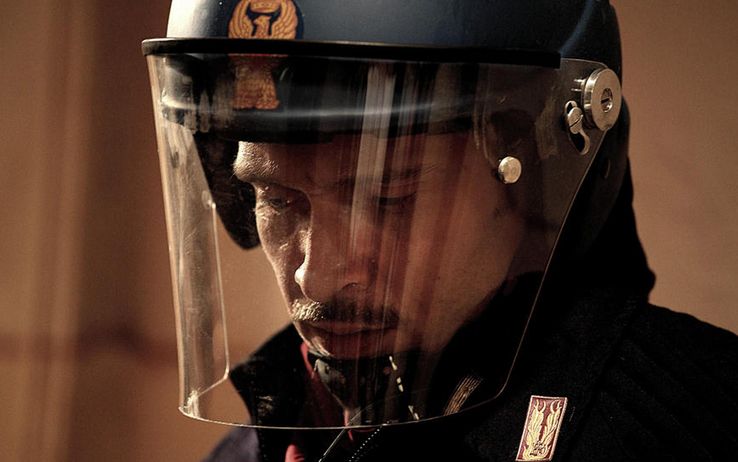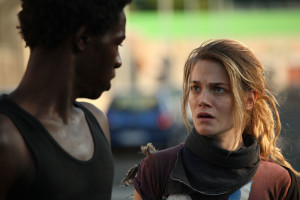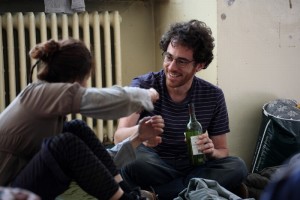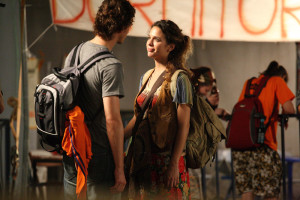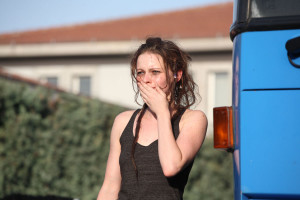Network Narrative in Diaz. Don’t Clean Up This Blood
I’ll be presenting this paper at the conference Italian Cinema in the Present Tense: New Narrative Practices from Adaptation to Transmedia and Transnational Cinema. A Seminar in Honor of Millicent Marcus. Friday, Nov. 13 and Sat., Nov. 14, 2015. Franklin and Marshall College, Lancaster, PA.
“Genova illuminata, / notturna, umida, alzata” (Giorgio Caproni,“Litania”).
The communicational experience of the 2001 Genoa G8 protests created an interrogation about the ability of the image to reveal the nature of events. The footage is traumatic because it is visual, but in such a way that the documents invoke the need for an exploration of the concealed driving forces. This study focuses on the film Diaz. Don’t Clean Up This Blood by Daniele Vicari, which to date remains the only docudrama entirely dedicated to the topic. In reconstructing the events that led to the raid on the titular school, Diaz embraces an aesthetic that David Bordwell and Alissa Quart have called “network cinema” or “hyperlink cinema.” This tendency mirrors the changes brought by the multimedia environment and convergence culture, and is characterized by a set of simultaneous narrative forking paths that overlap into each other. In hyperlink films there are several protagonists, but their projects can only be linked in retrospect, through active spectatorship. In this sense, Vicari’s project belongs to the tradition of movies that aim to trace a cognitive mapping of global systems, such as Traffic, City of God, Syriana, Battle in Seattle, Rendition, and Gomorrah.
The elliptical and episodic structure of Diaz is constructed around the recurring image of a glass bottle thrown by a protester against a patrolling police car, a minor infraction that furnishes a pretext for the authorities clearing out the school. Each one of the protagonists brings a different perspective on the events. Thus, in Diaz the lens of the camera becomes a sort compound eye made up of several individual visual receptors. Each of them functions as an eye in itself, and several of them together create a broad field of vision on what happened the night of the raid. Despite the accusations of inaccuracy that have always accompanied this type of work (from Salvatore Giuliano and Battle of Algiers to Il Divo and Piazza Fontana: The Italian Conspiracy), Diaz delivers the sensation of being in the midst of something that lawyers, journalists and documentarians have narrated numerous times.
Vicari uses the leitmotiv of the broken bottle to evoke a mosaic effect of assembling together the dispersed pieces of audiovisual evidence, filling the gaps with the use of fictional cinema. The prop is ‘hyperlinked’ to the two Molotov bottles that appear toward the end of the film. These were planted inside the school by the police and were initially used as incriminating evidence against the demonstrators in front of the national press. Thus, Vicari questions the version provided by the authorities by intervening on the raw documents. Diaz examines issues of digital ontology, mediation, and manipulation, questioning the limits of human memory and filmic evidence. A scrutiny of the audiovisual sources remains a defense against the criminalization of the Social Forum. The documents that the film incorporates are revealed to be multivalent fragments that contribute to multiple stories, and allude to the impossibility of telling the whole story.
Selected Bibliography
Agnoletto, Vittorio and Lorenzo Guadagnucci. L’eclisse della democrazia. Le verità nascoste sul G8. Milan: Feltrinelli, 2011.
Bordwell, David. Poetics of Cinema. New York: Routledge, 2008.
Caffarena Fabio and Carlo Stiaccini. “Piazza Carlo Giuliani – G8 Summit, Genoa 2001: Death, Testimony, Memory,” in Magry, Peter Jan and Cristina Sánchez- Carretero, eds. Grassroots Memorials. The Politics of Memorializing Traumatic Death. New York and Oxford: Berghahn Books, 2011; pp. 304–318.
Capelli, Claudia. “From Documentary Truth to Historical Evidence: The Images of the Genoa G8 Protests and the Construction of Public Memory.” Journal of Italian Cinema & Media Studies 3.3 (2015): 319-35.
Diaz. Don’t Clean Up This Blood. Dir. Daniele Vicari. Perf. Elio Germano and Claudio Santamaria. Fandango, 2011.
McDonnell, Duncan. “The Genoa G8 and the Death of Carlo Giuliani,” in Gundle Stephen and Lucia Rinaldi, eds. Assassinations and Murder in Modern Italy: Transformations in Society and Culture. New York: Palgrave Macmillan, 2007; pp.73-85.
Hajek, Andrea. Negotiating Memories of Protest in Western Europe: The Case of Italy. New York: Palgrave Macmillan, 2013.
Niwot, Melody. “Narrating Genoa: Documentaries of the Italian G8 Protests of 2001 and the Persistence and Politics of Memory.” History and Memory 23.2 (2011): 66-89.
Quart, Alissa. “Networked: Don Roos and Happy Endings.” Film Comment 41.4 (2005): 48-51.
Zamperini, Adriano, and Marialuisa Menegatto. “Giving Voice to Silence: A Study of State Violence in Bolzaneto Prison During the Genoa G8 Summit,” in D’Errico, Francesca and Isabella Poggi, eds. Conflict and Multimodal Communication. Zurich: Springer International Publishing, 2015; pp. 185-205.

